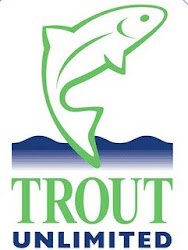Grizzly Bear advocate Doug Peacock has released a new memoir, in the form of a collection of essays. It is entitled Was it Worth It? A Wilderness Warrior’s Long Trail Home and published by Patagonia. For those unfamiliar with Peacock, he served as a US Army Special Forces medic during the Vietnam War. Partly as a means of recovering from his combat experience, he immersed himself in wild places, particularly in places such as Yellowstone and Glacier National Parks. There, he observed and filmed grizzlies, eventually becoming a genuine authority on their numbers and behavior. He wrote several books along the way, most famously Grizzly Years: In Search of American Wilderness (1990). Eventually, he emerged as a well-known environmental activist and author, seeking to protect not only grizzlies and their remaining natural habitats, but many other animals and ecosystems as well. He even served as the inspiration for his friend Edward Abbey‘s fictional character George Washington Hayduke. Abbey included this character in his influential 1975 Monkey Wrench gang novel, about four radical environmental activists, and in its sequel Hayduke Lives! (1989).
As I have noted elsewhere, Peacock is also a fly fisherman. He addresses the topic in several of essays included in his new book. What I like best about the book, however, are Peacock’s views on wilderness, and the relationship between human and other-than-human beings. A good example is found in the chapter “Headwaters,” about an extended float trip in Montana.
The close encounter with the nonvenomous snake brought me a heightened awareness of the beauty all around me. It was good to have dangerous wild neighbors. Living among grizzly bears had made a similar impression on me. Sharing the habitat with animals that sometimes kill or eat humans was the most direct route I knew toward a non-anthropocentric cosmology. How the hell could anyone believe humans were the center of the world when facing venomous reptiles, grizzlies, tigers, lions, jaguars, or polar bears [many of these creatures appear in the book] on equal terms and neutral turf?
Peacock, Was it Worth It?, 149
I’ve explained before that several generations of my family were inholders in Glacier National Park, and my sisters and I share a cabin on the edge of Montana’s Scapegoat Wilderness, part of the larger Bob Marshal Wilderness Complex. Both areas are inhabited by grizzly bears and wolves. Indeed, there are 13 wolf-packs in the drainage where our cabin is located. So, I spend a lot of my time thinking about these creatures and my relationship to them.
Grizzly bears and wolves are key parts of the the ecosystems to which they are native. If they disappear altogether, those ecosystems change fundamentally. Those ecosystems are no longer the “Glacier Park” or “The Bob” that we love. For a variety of reasons, many people would like to see the numbers of these animals greatly reduced, even to extinction. Where I currently reside, it is not uncommon to see trucks adorned with decals that say “smoke a pack a day,” the double meaning of which is to slaughter a wolf pack (the decal usually depicts the silhouette of a wolf pack in cross hairs). This is just one example of how violent and even hateful the attitudes toward native apex predators can be. Like Peacock, I simply don’t understand how the sort of people sporting these decals can see the grizzlies and wolves as beings with lesser significance than humans, beings for which we need show no consideration. Of course, I do understand concerns about predation upon livestock and pets, but such incidents can be reduced through means other than annihilation (and those means might certainly include responsible hunting). Most important, we need to protect the predators’ natural habitats and food sources, so that they are less compelled to roam.
A friend and I often discuss how so many of the “outdoorsmen” and “outdoorswomen” we see in the mountains around here are insulated from the other-than-human world around them. They spend much of their days on noisy ATVs, which kick up so much dust it must be hard to even see the edge of the dirt road, let alone the forest beyond it. At night, they climb into their trailers, close the doors, and behave just exactly as they would back in the city. When they do see bears, wolves, and so on, it is often in the context of a hunt, which all-to-often is driven by ego (mind you, I am all for responsible subsistence hunting). So, obviously, they are not likely to achieve the “heightened awareness of the beauty” around them, that Peacock does in the passage above.
Would their anthropocentric attitudes change if they broke through the physical and mental barriers that insolate them from other-than-human beings as Peacock believes? I suspect so. Regardless, I appreciate that Peacock offers us a book that provokes such questions. I appreciate too, that he has spent so much of his life genuinely trying the change the anthropocentric views of humans, who see the beings around them as something lesser, something bothersome, and something unnecessary.
Was it worth It? is an engaging read. The essays touch upon a variety of experiences in Peacock’s interesting life. This means there is probably something in the book that will resonate with every reader. That said, the copy-editing by Patagonia could be better. Overall, however, I recommend the book.






















